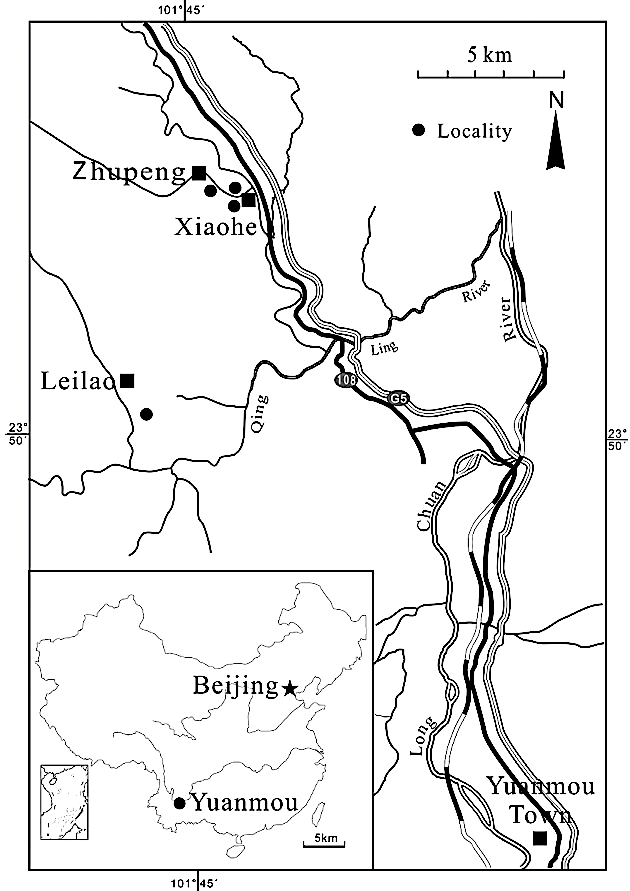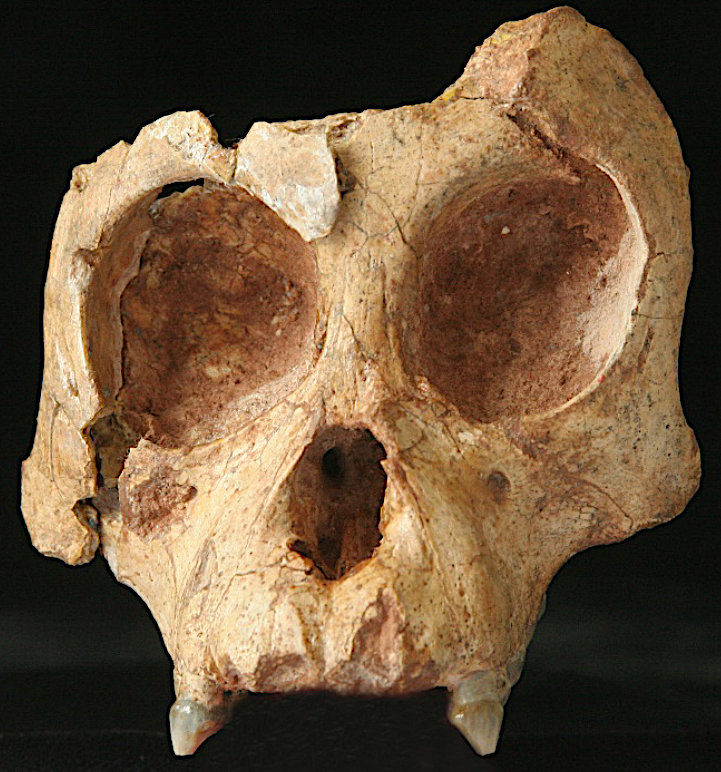Xiaohe Fm
Type Locality and Naming
The naming section is located at Baozidongjing, about 1 km west of Zhupeng Village and at Hudiliangzi and about 1 km north of Xiaohe Village, Aozhu Township, Wumao area northwest of the Yuanmou basin, Yunnan. The naming and section is measured by Qian Fang, and Zhou Guoxing et al. in 1991.
[Figure: Geological setting of Yuanmou Basin, including localities from Leilao, Xiaohe, and Zhupeng, modified from Lu (2013).]
Lithology and Thickness
Mainly brownish red or purplish and yellow clay, sandy loam, silt and fine sand, with thin-bedded, light yellow to yellow fine sand and gravel. The thickness is up to 80 m.
Relationships and Distribution
Lower contact
The formation has an unconformable contact with the underlying Cretaceous purplish red fine sandstone or granite. [Inserted for regional graphic purposes between the Shagou Fm and the Xiaolongtan Fm]
Upper contact
The formation has a disconformable contact with the overlying Pleistocene red soils. [Inserted for regional graphic purposes between the Shagou Fm and the Xiaotan Fm]
Regional extent
This formation is mainly distributed in the Leilao and Wumao areas, Banguo in the northern part of the Yuanmou basin and also exposed at Zhima village at the northern end of the basin.
GeoJSON
Fossils
It contains Hominoidea, mammals and sporopollen. A total of more than 107 species of mammals have been found based on the assemblages by Qi et al. 2006; the main forms are Laccopithecus sp., Sinoadapis parvus, Sciurotamias leilaoensis, Trochotherium yuanmouense, Ailurarctos yuanmouensis, Tetralophodon xiaohensis, Mammut zhupengensis, Subchilotherium intermedium, Macrotherium yuanmouensis, Molarochoerus yuanmouensis, Muntiacus leilaoensis, Dorcabune sp. Sporopollen is scarce and monotonous, mainly Pinus, Cupressaceae Quercus, Betula and Alnus, and herbs are mainly Chenopodiaceae, Artemisia and Leguminosae.
[Figure: The pit producing the rhinoceros skeleton in Xiaohe Village, Yuanmou County, Yunnan; the fossils are from the sandstone just below the light yellow clay, with gravel (by courtesy of Ji Xueping).]
[Figure: . Skull of Lufengpithecus hudienensis (By courtesy of Xueping Ji).
Age
Depositional setting
Additional Information

